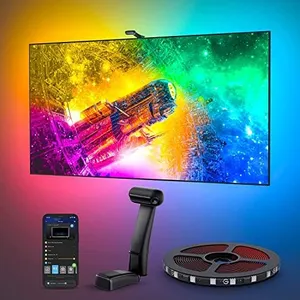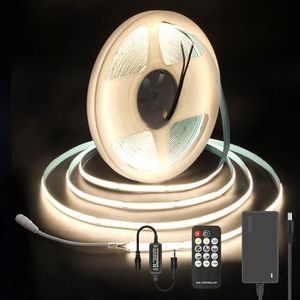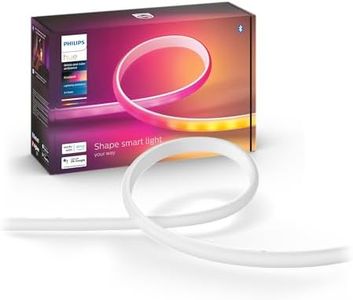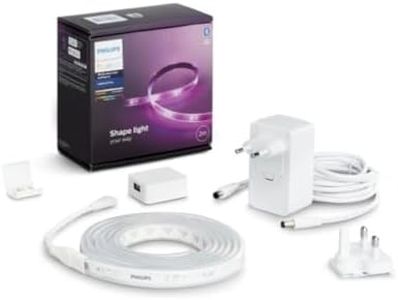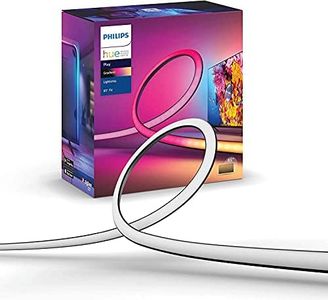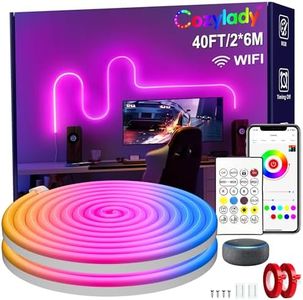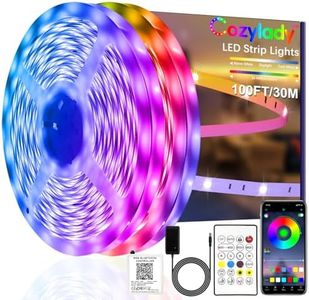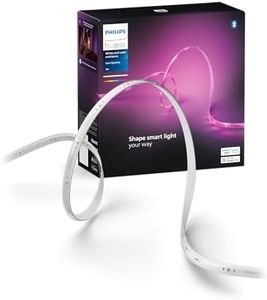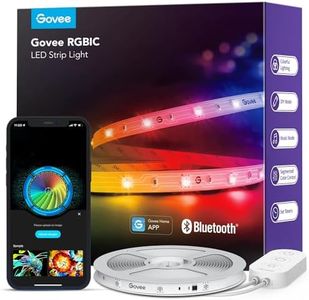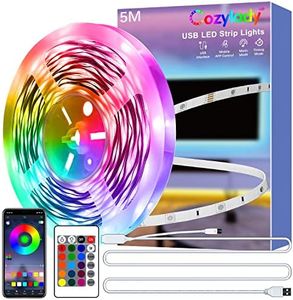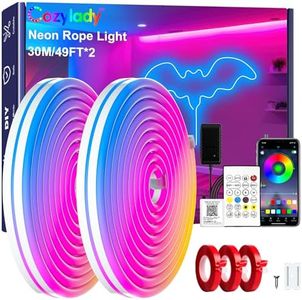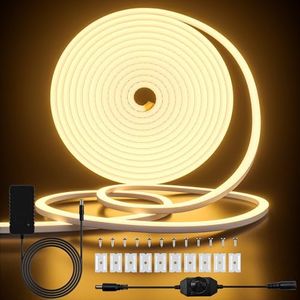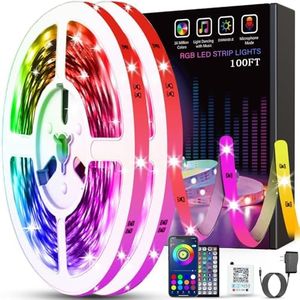We Use CookiesWe use cookies to enhance the security, performance,
functionality and for analytical and promotional activities. By continuing to browse this site you
are agreeing to our privacy policy
10 Best Led Strip Lights
From leading brands and best sellers available on the web.By clicking on a link to a third party's website, log data is shared with that third party.
Buying Guide for the Best Led Strip Lights
When choosing LED strip lights, it's important to match their features to your needs. Consider where you’ll use them: indoors or outdoors, for ambience or functional lighting, for accenting a space or brightening up a whole room. The right choice depends on what effect you want to achieve, how you'll mount the lights, and whether you'll want to control them with a remote or an app. Before you buy, always measure your space to know how much length you need, and check for compatibility with your power source.BrightnessBrightness in LED strip lights is typically measured in lumens. This tells you how much visible light the strip will produce. High-lumen strips are very bright and best for areas where you need a lot of light, like kitchens or workspaces. Medium brightness is good for general ambiance in living rooms or bedrooms. Lower brightness is suitable for accent lighting, such as backlighting a TV or highlighting shelves. Think about the mood you want to set and how much light you’ll really need—less is often enough for relaxation and more is needed for tasks.
Color OptionsLED strips can offer a single color (usually white or warm white) or multiple colors (often called RGB or RGBW for red, green, blue, and white). Single color strips are straightforward for simple lighting needs, while RGB can create a wide range of hues for creative ambiance. RGBW adds even more flexibility with a dedicated white light. If you need mood lighting or want to match party decorations, color-changing strips are ideal. For simple under-cabinet or task lighting, a single color may be best.
Temperature and Waterproof RatingThe usage environment matters: if you’re using lights outside or in areas with moisture (like bathrooms or kitchens), check if your lights are rated for water resistance. This is usually shown as an IP rating—for example, IP65 means it's protected from dust and water jets. For indoor dry spaces, a lower or no IP rating is fine. For outdoors or wet places, pick a higher IP rating to ensure safety and longevity.
Control MethodControl options include simple wall switches, remotes, or even apps that work via WiFi or Bluetooth. Some strips can also integrate with smart home systems. Remotes and apps offer the ability to change colors, set timers, and create scenes. If you like convenience and automation, look for smart app controls. For straightforward usage, a remote or switch may be all you need.
Strip Length and Cuttable SectionsLED strips come in different lengths and can often be cut to fit your exact space. Each strip has marked cutting points so you can trim without damaging the strip. If you have a long area, make sure you buy enough length, or if you have small or oddly-shaped spots, check that the strip can be easily cut and reconnected if needed.
Power Supply TypeLED strips run on low voltage (often 12V or 24V), requiring a compatible power supply (sometimes called a driver or adapter). Some come with plug-in adapters while others require wiring. Ensuring you have the right power supply is crucial—using the wrong type can lower performance or even damage the lights. Think about where you'll plug in the strips and what connections are available when choosing.
Installation MethodMost LED strips have an adhesive backing for easy peel-and-stick installation, but this works best on clean, flat surfaces. Some need mounting clips or channels for a professional finish or to handle heat better. Consider your surface type and whether you'll need extra accessories for your setup.
